Let the Right One In
Because of festivals and award ceremonies, there aren't many films that arrive on these shores completely unknown and without any Internet chatter. Let The Right One In was already heralded as a great film before it even hit cinemas in the UK, partly due to the novel upon which it is based, but mostly because critics and audiences alike around Europe had been wowed by its direction, subject matter and acting. So, it was with extremely high expectations that I went to the cinema to see if it was all that it was cracked up to be. Two hours later and I was fully aware that everyone who had acclaimed it as the latest great horror movie and one of the finest vampire films ever made was entirely right as I had been mesmerised throughout.
Set in a small town in Sweden in the early 1980s, Let The Right One In follows Oskar, a thin, weedy 12-year-old boy who is picked on by his peers, who tell him to 'squeal like a pig' and submit him daily to various degrees of bullying. Oskar seeks solace in trying to figure out how to complete his Rubik's cube and compiling his scrapbook of all the violent murders that have taken place in Sweden and around the world. He also fantasises about what he would love to do to the three boys who make its life a misery, taking a sheath knife out with him and stabbing it into a tree, repeating their jibes out loud, as he violently enacts stabbing them to death.
One day when he is outside playing with the Rubik's cube, he isn't the only one sitting on the adventure playground (or, if you prefer, the jungle gym). A very slight girl about his age is perched there watching his every move. Perhaps the strangest thing about her is, although the temperature is below zero and there is thick snow laid on the ground, she is only wearing a thin top, trousers and lightweight shoes but doesn't seem to notice the cold. Although she is slightly strange to look at and her general demeanour is far from the ordinary, Oskar becomes intrigued by her presence and asks her if she'd like go at the Rubik's cube. Although they are extremely famous and just about everyone in the world with access to television will have seen them, the young girl, Eli, enquires how it 'works' but it is only after Oskar says that she can keep it for a couple of days and doesn't have to return it the next day, that she agrees to have a go.
This strange creature, this enigmatic young girl has a profound effect on Oskar and he almost shifts his entire focus from reading about crime to figuring out when she will next be outside to talk to as a way to escape from everyday life. There is something about Eli that isn't quite right, and it isn't just her ability to seemingly not notice cold weather or not know exactly how old she is, it is something else, perhaps something linked to that strange smell that permeates from her. Whatever it is, Oskar wants to figure it out.
One thing Oskar does know is that Eli lives in the apartment next to his and, just as he lives with his mother, Eli seemingly lives alone with her father. From what we see, rather than what Oskar sees, of the interactions between Eli and the man, Håkan, living with her, this isn't your normal, everyday father/daughter relationship as Håkan almost worships her and is clearly subservient to the young girl in the apartment. Perhaps the answer to the strange smell and Eli's ability to withstand the cold lies in Håkan's trips to the local woods, where he takes a bag with a length of rope, funnel, large container and other paraphernalia which he uses to render a teenage boy unconscious, string him up to a sturdy tree branch by his ankles and is in the process of bleeding him dry when he is interrupted by a poodle. Why would he need so much blood?
As Håkan returned to Eli empty-handed, the young girl has to take matters into her own hands and, playing an injured child lying in an underpass, is able to convince one of the local men passing by to pick her up and carry her to safety. Safe in his arms with her head nestled comfortably on his shoulder, she shifts her face closer to his neck and, with incredible strength, locks herself onto him, bites into his neck and drinks the blood that is so precious.
I can't remember the last time I wanted a disc more than this one as, due to various errors, I kept putting off buying the Blu-ray Disc until I was certain that the one I was going to receive would be error-free. I don't know why it had to happen to this film, but the American release had apparently been given dodgy subtitles that didn't replicate those from the theatrical print and the UK version had only been given standard definition sound due to an error on the first printing run. I therefore bided my time and, when I was 99% sure that the old stock had been withdrawn, I then placed my order only to receive a BD with standard definition sound! Fortunately, Momentum had a facility to swap old discs for new ones so, nearly a year after seeing the film in the cinema, I eventually was able to watch it at home with high definition sound.
The wait was well worth it as, between seeing it at the cinema and watching the proper disc, I had watched the 'faulty' disc all the way through just to get reacquainted with the film and soak it in a bit more. You can split films into three camps: those that on repeated viewings seem to just get better, richer and more rewarding experience; those that seem just as good as the last time and those that seem worse with every viewing. Let The Right One In just seems to get better and better the more I watch it and, having now read the book (a brilliant piece of literature), I now like the film even more than I did at the cinema -- something I didn't think was at all possible.
Although there are many differences between the book and film, I can't say that either suffers from the changes made by John Ajvide Lindqvist to his own book in order to write the screenplay. As with many adaptations from novel to screenplay, the book is so long and dense, that it would be impossible to fit everything into a 90-120 minute film so there are scenes that have been taken out, others that are severely truncated and some characters that are fairly central in the novel are just peripheral in the film. Rather than enter into a debate about whether the book is better than the film or vice versa, I would submit that they are two separate entities, just as Mario Puzo's The Godfather is different from the film in terms of certain characters, events and even entire sections.
The film is a masterpiece of modern horror and manages not to be everything it is. Although this sounds extremely illogical, Let The Right One In is a horror film without a great deal of horror, a coming-of-age movie in which the protagonists don't really come of age and a romance in which there isn't a great deal of romance. Lindqvist is such a skilled writer that he manages to bring in a great deal of the vampire mythology into a period setting, albeit a relatively recent period, and intertwine recent Swedish history with a story about vampirism, first love and unrequited love.
Let The Right One In is beautifully brought to the screen by Tomas Alfredson who is clearly a director of great skill and vision. It is such a beautiful film to watch with the snowy, bleak Swedish landscape of Oskar's father's home out by the sea which is surrounded by white fields as far as the eye can see contrasting sharply with the grey concrete of the manufactured town in which Oskar lives with his mother, a woman who works nights and leaves her young son to his own devices for much of the time. The central performances by the two young actors, Kåre Hedebrant as Oskar and Lina Leandersson as Eli, are remarkable and really help to draw you into the film and empathise with both characters. This is a film of great intelligence and its hauntingly beautiful, living with you for several hours after the end credits have rolled.
The Disc
Extra Features
The disc isn't exactly swimming with supplementary material, perhaps understandably as everyone involved is Swedish so it would either require everyone to use their best English or have all the bonus features subtitled.
The commentary by Jon Ajvide Lindqvist and Thomas Alfredson (who both speak extremely good English) which is a much more interesting commentary than I expected as Lindqvist embellishes on some of the on-screen events, referring to incidences in the novel whilst Alfredson talks about the adaptation and the filming process, including the period look and how it helped to be about Oskar's age at that time.
There is also a deleted scene which, to be honest, doesn't need to be in the film, and the theatrical trailer.
The Picture
If you didn't know better, you would be forgiven for thinking that this was actually made in the early 1980s as the setting is so grim and bleak that the oppressive atmosphere allows Eli to survive. You really get a sense of how hard life is as the characters are rarely seen enjoying themselves and, in the few situations in which an adult smiles, they are normally drinking at the same time.
The image quality is absolutely superb, dominated by the snowy landscape and grey, industrial apartment buildings. Amongst this extremely drab palette it is easy to pick out flecks of colour, shapes in the snow and people in the distance. Alfredson and his director of photography, Hoyte Van Hoytema, do a tremendous job in separating the exteriors, which look, as they should, extremely harsh with the interiors that can look warm and inviting yet somehow a little artificial and kitsch. I have no idea as I wasn't in Sweden at that time, but I can perfectly believe that that's how it was; a country with an almost Soviet/Eastern Bloc style of living.
There is one moment in the movie where I thought that there was a terrible error, both with the original negative that I saw at the cinema and with its transfer to BD. It occurs when the school go ice skating and there is a moment where the bottom right-hand corner goes extremely hazy as if there is a problem with the film stock. According to Alfredson in the commentary, that shimmer is there because they were filming over a brazier on which sausages were being cooked so what you are actually seeing is the heat haze!
There is a scene involving Håkan, which I won't go into and spoil here, but when it comes about the SFX make-up and CGI work are absolutely stunning and what your mind tells you something should look like really does appear that we on-screen.
The Sound
This is the thing that made me send my original disc back in order to get a proper HD soundtrack and I don't regret being slightly out pocket because of that. However good the DTS track is, and it is an extremely good track, the DTS-HD Master Audio 5.1 is just that little bit better, slightly more nuanced and presents the atmospherics and quieter surrounds superbly well. The dialogue comes across extremely clearly and, even though I don't speak Swedish, all the inflections in the actors' delivery comes across perfectly to complement the excellent optional English subtitles.
Final Thoughts
Let The Right One In is a remarkable film, easily the best to be released in cinemas here in 2009. Although I haven't seen it as many times as other films, it has firmly cemented a place as one of my all-time favourite vampire movies and a film that I will watch again and again. Although the disc isn't packed full of extra features, the commentary is a very good one and one that is well worth listening to if you want to gain a greater understanding of how the film was made and some of the subtext. The book is a minor masterpiece, a terrific read, so it is no surprise that the screenplay is as good as it is and led to the finest foreign film since Pan's Labyrinth.
An American adaptation of Lindqvist's book is due for release in 2011 and it will have to be quite some film to be anywhere near as good as this one. I suppose they are trying to distance it from the Swedish film by having it set in Canada and giving the characters different names but, even so, most will regard it, rightly or wrongly, as a remake.
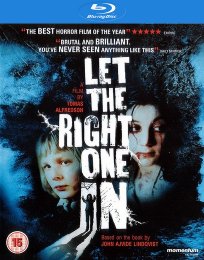

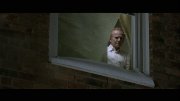
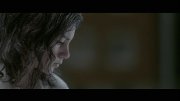
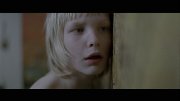
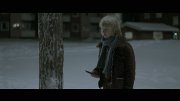


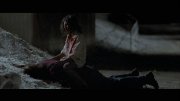
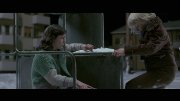
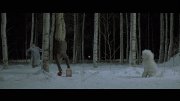
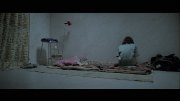
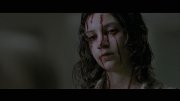

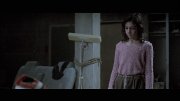
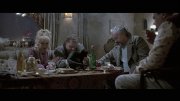
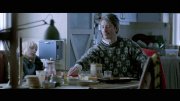











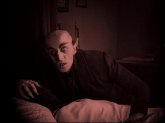


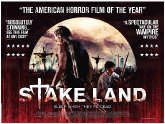
























Your Opinions and Comments
Be the first to post a comment!